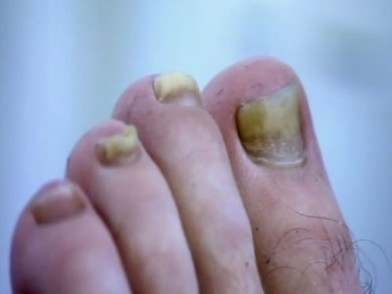Did you find something odd about your toenail? Maybe a strange discoloration or a dark spot located on the nail? Chances are you might think this is a case of fungal infection but the truth is that there is also a high chance that it is not an infection but something else entirely.
While studies have shown that 15% of people in America has some type of fungal infection on their feet or toenails only half gave some positive response to treatment. The truth is that a lot of other health conditions imitate the symptoms of fungal toenail infections, hence, the ineffectiveness of fungal infection treatment to some. There are several ailments that also affect the nails which is why it is quite easy to chalk abnormal toenail color to fungal infection. So, how do you determine whether you have fungal infections or something else entirely? Below is a compilation of various toenail infections and their specific symptoms to determine which is which and allow you to apply appropriate treatment.
Different Types of Fungal Infections on the Toenails
First off, keep in mind that there are several sub types of fungal infections that can affect toenails:
 Distal Subungual Onychomycosis – Basically, this is often the reason for fungal infection on the nails. It affects the tip of the nail, mostly located underneath. Its symptoms include discoloration (yellowish color), dulled texture and turning the nail brittle and prone to breakage.
Distal Subungual Onychomycosis – Basically, this is often the reason for fungal infection on the nails. It affects the tip of the nail, mostly located underneath. Its symptoms include discoloration (yellowish color), dulled texture and turning the nail brittle and prone to breakage.- Endonyx Onychomycosis – This type is classified when the fungal infection is developing underneath the coatings of your toenails. This in turn gives your toenails a thick whitish color and causes them to develop splits.
- Proximal White Subungual Onychomycosis – is a less common type of fungal infection that is often seen in people who have lower immune systems. Health conditions such as HIV/AIDS can increase the chances of developing this type of fungal infection. This type of infection usually affects the cuticle which turns that area of the toenail white.
- White Superficial Onychomycosis – A rare type of fungal infection, this can affect even healthy individuals. This is primarily caused by a unique type of fungus that attacks the toenail’s plates. The fungus further develops and will appear visible on the outside which will give the toe nail a brittle feel and whitish color.
- Candida Infection – This is caused by yeast infection and may cause the nail to separate from the toes. However, this is much more common on the fingernails than in toenails.
Health Conditions that Mimic Toenail Fungus Symptoms
 Below is a list of health conditions that usually display similar symptoms to that of toenail infections. Knowing how to differentiate between these conditions is the first step to figuring out proper treatment.
Below is a list of health conditions that usually display similar symptoms to that of toenail infections. Knowing how to differentiate between these conditions is the first step to figuring out proper treatment.
- Psoriasis – This causes the skin to appear red and scaly. A large number of people who are affected by this skin disorder also have this condition spreading to the nail. Nails on both hand and feet will begin displaying symptoms similar to fungal infections such as discoloration, brittle and loose texture.
- Skin Cancer – If a spot inside the toenail is visible it can also be a sign of melanoma which is a fatal type of cancer of the skin. Black or brown spots located underneath the toenail maybe a serious medical condition that you should have a doctor checkout immediately.
Learning the difference between a simple toenail fungal infection and a more serious health condition is vital for your safety. Do not simply ignore what appears to be toenail fungal infection, it is best to have your doctor check it out in order to give you proper treatment as soon as possible.
Do you want to find an effective Nail Fungus treatment? Check out our top rated Nail Fungus products












